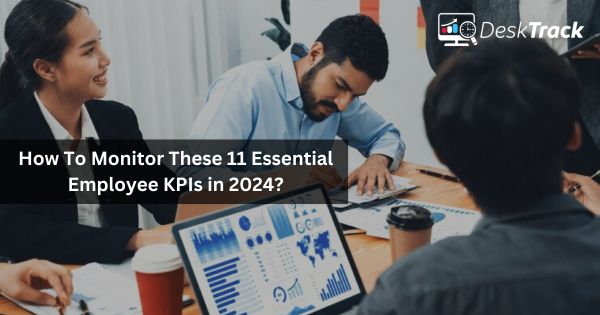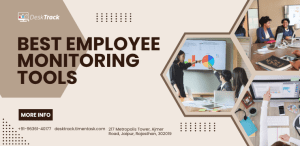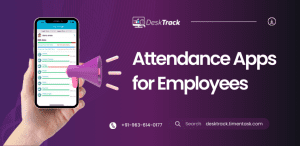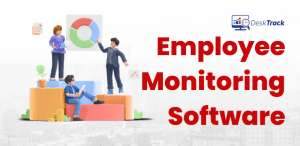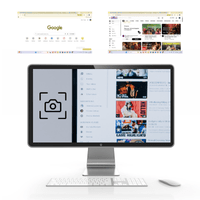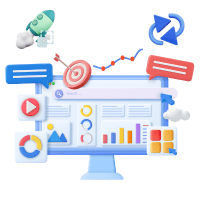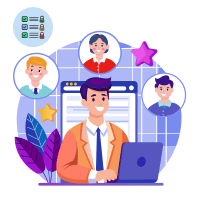So, you have set a strategic objective. However, how will you measure that you are progressing positively towards it? Evaluating Employee KPIs is your short answer. In this blog, we will cover everything you need to know about this key element for a successful business venture.
A Brief Into Employee KPIs
Employee performance KPIs are basically measurable values. These metrics help identify the efficiency, productivity, and contribution to company level of your team members. These numbers assist you in identifying.
- Areas where your staff is excelling and where there is room for improvement.
- Whether your employees’ performance is adding to the company’s objectives or not.
These quantitative values help you realign performances back to track. Overall, the idea is that the employees’ efficiency and productivity must go beyond their individual goals and meet your organization’s goals, ultimately giving success.
Some Common Employee KPIs
This section covers some common KPIs, which every company measures. The idea is to give you a much better understanding of KPIs than just an overview.
- Planned hours vs time spent (comparing these metrics).
- Percentage of on-time completion
- Budget variance (as compared to the estimate)
- RoI (Return on Investment).
- Number of change requests (frequency of stakeholders requesting the change of scope).
- Client concerns and complaints.
- The employee churn rate (resignation rate of employees during a project).
- Net promoter score (NPS, customer satisfaction score).
10 Essential Employee KPIs
Evaluating these 10 Employee KPIs will give accurate data on employee performance. Thus, being aware of them is also a must.

- Rate of completing tasks.
- Work quality.
- Timeliness and punctuality (key measures for productivity).
- Employee availability and online presence (shows their dedication).
- Initiative and proactiveness (shows the extra mile your employee can go for your company’s benefit).
- Feedback and effective collaboration ( the actual step to improvement).
- Learning and development (helps employees grow).
- Project efficiency (focuses on resource management).
- Absenteeism (frequency of absent markings).
- Task delegation and leadership (because many employees need an opportunity to lead).
Setting up Employee KPIs: Step-by-Step
Time to get practical with Key Performance Indicators. Now that we know an introduction and have learned about some common KPIs, we will now give you a step by step guide on setting up KPIs
Step 1: The first step is to get down to linking the KPIs to objectives. An essential part is that these goals must lead to the success of your own business.
- Taking inspiration fromemployee kpis examples of other companies is allowed. However, the ones you implement must benefit your company only.
Step 2: Now that we have got the objectives covered, it’s time to set the employee performance metrics. Each KPI here must lead to completing a certain objective and so, must be linked to it.
- A pro tip here is to make your organization’s goals relevant and clear. Furthermore, the criteria formeasuring performance of each employee must only be measured on no more than 3 KPIs.
Step 3: You must identify whether you are on the right track or not. The idea is to put measurable results into your business.
Step 4: Now the next part is to break down your KPIs to see the actual measurable values. There are 2 criteria for this.
- Decrease or eliminate multitasking in the office.
- Make the daily work routine manageable. (Think realism, people).
Step 5: It’s obvious that you must write down the Employee KPIs now. Below, we have given a general rule of thumb on the basic structure of each.
- Action + detailing + value + timeframe + unit. for example, monitor the idle and work hours of each employee.
Step 6: You can’t just stop here.It’s essential to track the progress of your KPIs. Luckily, this part gets the ease of access with Employee Monitoring Software such as DeskTrack.
Advantages of Measuring Employee KPIs
Now that you have set up and started tracking the progress of Employee KPIs of your staff with an effective performance measurement system, it will also be good to know the benefits you get from measuring KPIs down the road.
Make Your Workday More Productive
Time tracking and work management can help you reach your goals faster.
Try 15 Days for Free

- Boost in employee engagement
- Transparency in communication.
- Build employee trust.
- Raise in productivity
- Satisfied employees.
a. Boost in Employee Engagement:
The more the employees are engaged and dedicated, the more efficiently they will work.
- Studies have shown that getting regular feedback and monitoring performance metrics has provided a boost in employee engagement by around 90%.
b. Transparency in Communication:
Directly telling your staff the KPIs sets a high standard of communication. According to research, this results in around 50% less low employee turnover.
c. Build Employee Trust:
Employees’ trust is one of the essential elements of success. With clear and open KPI communication, you build employee trust. Again, research has shown that high-trust companies have shown around 50% higher productivity.
d. Raise in Productivity:
If you openly set expectations from employees, it is more likely to increase productivity. Setting these via Employee KPI Monitoring Software such as DeskTrack will probably result in maximum productivity here.
e. Satisfied Employees:
You already know that employee satisfaction always outcomes in them staying longer. And the best way to achieve this is open and positive communication.
Measuring Employee KPIs Effectively: 11 Tips to Follow
Now that we know all about essential KPIs and how to set them up, let’s start measuring employee performance.
- The objectives set must have clarity.
- We recommend using the Best Employee Monitoring Software for evaluating staff KPIs.
- Establish baselines on current performance metrics to have a starting line for optimizing.
- Collect data regularly to stay updated and get insightful details on employee performance.
- Provide cum reports as per the needs of various stakeholders.
- Conduct performance reviews and discuss results, objectives, and improvement plans, one on one with employees.
- Maintaining clarity about the performance measurement standards with employees is essential for their collaboration.
- Aligning with organizational culture.
- Compare your performance against industry checkpoints. Identify points of excelling and improvisation.
- You should highlight and celebrate improvement and success.
- Your system must adapt and grow with your company.
Conclusion
This wraps up the session for today. In this blog, we covered an overview and the 10 essential Employee KPIs. We also further discussed a few common examples, and benefits of KPI measurement. The article concluded with 11 tips to effectively measure key performance indicators. As final thoughts, we believe that measuring KPIs is not optional, and every organization must practice this for a successful growth future.
 5,000+ Companies
5,000+ Companies $150M+ Productivity
$150M+ Productivity